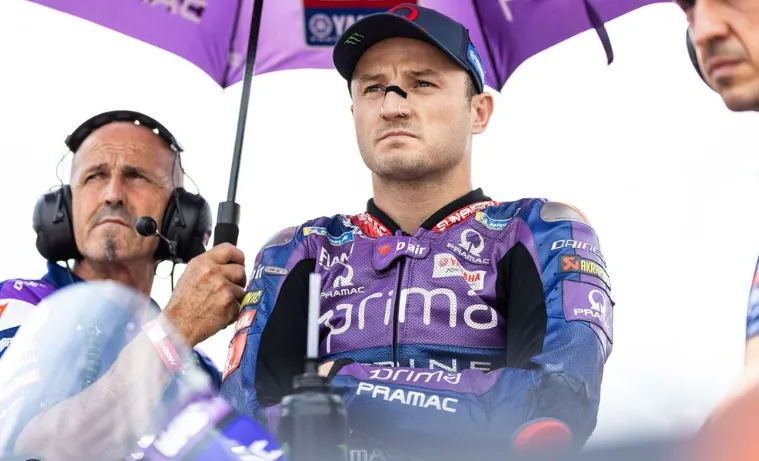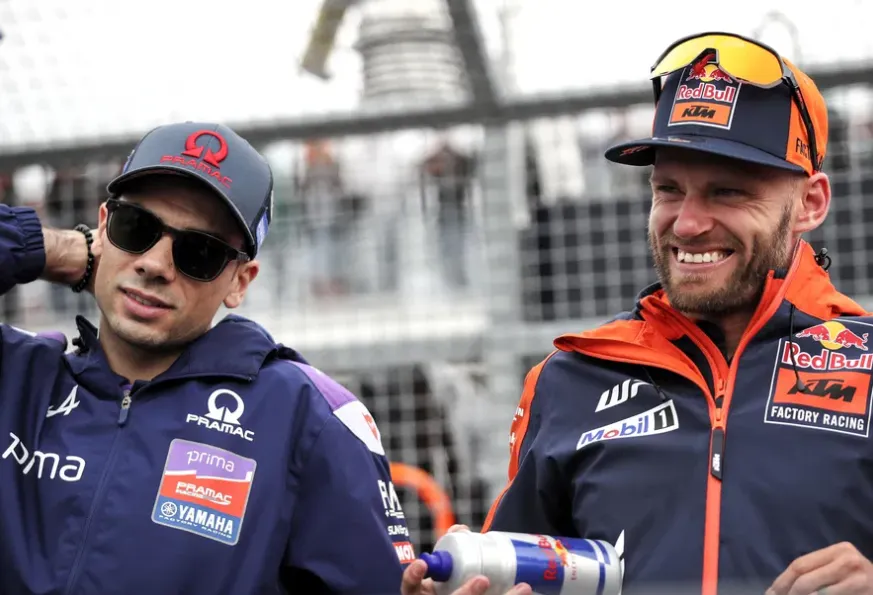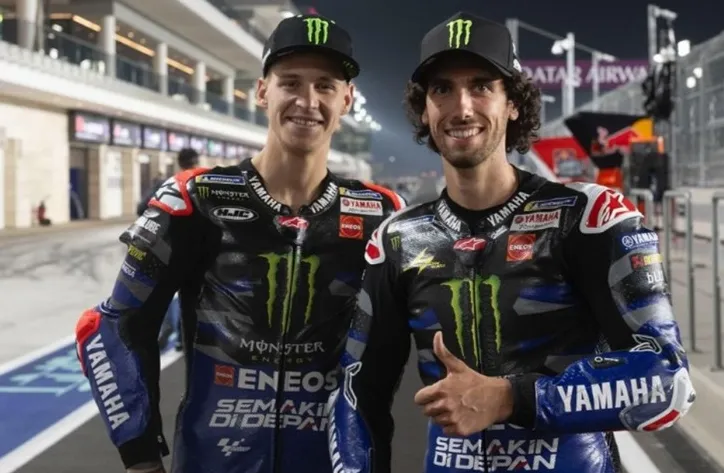

MotoGP Shake-Up: Oliveira Rejects Aprilia’s Offer Amid Career Uncertainty
The MotoGP rider market rarely stays quiet for long, and this time, the focus has turned sharply to Miguel Oliveira. Once a five-time premier class race winner and one of Portugal’s finest racing exports, Oliveira now finds himself at a career crossroads, facing tough choices as the 2026 season approaches.
Rumors have been swirling around the paddock that the former KTM and Aprilia rider could be in line for a return to Aprilia—but not in the way most fans would have hoped. Reports linked Oliveira with a test rider position alongside long-time Aprilia development specialist Lorenzo Savadori. In an era of intense technological changes, particularly with the controversial switch to 850cc engines planned for 2027, test riders are poised to become even more important. But Oliveira has made his position perfectly clear: he’s not ready to step away from the grid just yet.
Oliveira: “I Want to Race!”
Responding to the speculation, Miguel Oliveira issued a firm but polite response to the rumors:
“Not really. I want to race! But of course I’m open to anything.”
The Portuguese rider’s statement cuts through the uncertainty. While he’s pragmatic enough to keep doors open, his competitive drive remains very much alive. At just 30 years old, Oliveira believes he has more to give in MotoGP’s top tier, and stepping into a non-racing role feels premature for a rider who not long ago delivered stunning wins and consistent podium threats.
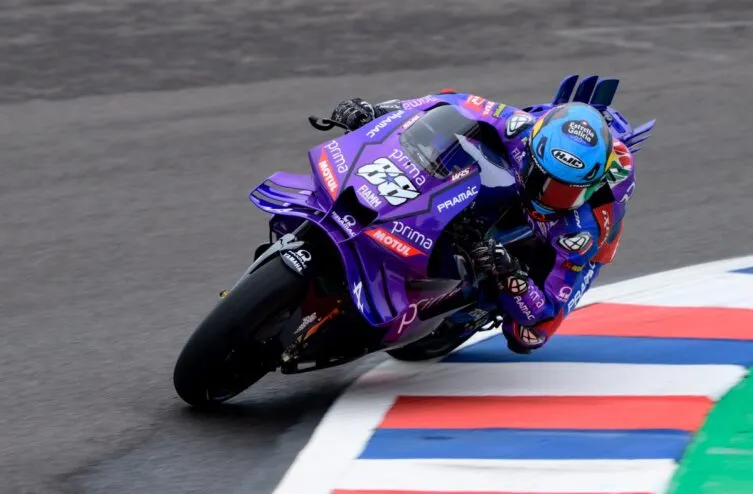
His comments also underline a growing frustration with the sport’s evolving landscape. “I don’t know what could be a development plan and a wild-card plan for next season,” he explained. “What’s the sense of wild-carding when the bikes are going to be different for 2027?”
These remarks highlight the tension between the present and the future. Teams are increasingly forced to think ahead toward new regulations, but for riders like Oliveira, whose window to perform at the top level is finite, the timeline for opportunity is much shorter.
A Tough Year at Yamaha
Oliveira’s current chapter has been far from ideal. Having joined Pramac Yamaha in a high-profile move for 2025, expectations were high. Yamaha, still recovering from years of technical stagnation, hoped that pairing Oliveira with Jack Miller and factory spearhead Fabio Quartararo could help stabilize their competitive trajectory.
But the season quickly turned into an uphill battle. Yamaha’s YZR-M1 continued to suffer from lack of pace compared to the Ducati, KTM, and Aprilia bikes. Oliveira struggled to find rhythm, with his best finish a modest 12th place at the Hungarian Grand Prix. For a rider with his experience and prior success, this was a bitter pill to swallow.
While Jack Miller seems increasingly likely to stay with Pramac alongside incoming superstar Toprak Razgatlioglu for 2026, Oliveira’s position appears to be dissolving. Yamaha has reportedly been exploring several other options, including Moto2 standout Manuel Gonzalez, though recent reports suggest Gonzalez will remain in the intermediate class for at least another season.
The Bigger Picture: A Changing MotoGP
MotoGP as a whole is entering a period of major transformation. The planned engine capacity reduction to 850cc for 2027 will fundamentally alter the performance profiles of every manufacturer’s machinery. While such a shift is intended to improve safety, reduce costs, and level the playing field, it has also introduced significant strategic uncertainty for teams and riders.
Test riders, once viewed as background contributors, are now central to how manufacturers will adapt to the new regulations. A skilled test rider with experience across multiple manufacturers, like Oliveira, is an invaluable asset. He not only knows how to evaluate new technology but can provide immediate, high-level feedback to accelerate development.
This explains why Aprilia is eager to bring him back into the fold. But Oliveira’s reluctance is equally understandable. To a racer’s heart, trading the heat of competition for behind-the-scenes engineering work feels like an early retirement, even if it’s dressed in professional importance.
A Career at a Crossroads
Miguel Oliveira’s MotoGP journey has been a story of resilience and adaptability. From his early years at KTM, where he delivered the Austrian brand its first victories, to his stint at Aprilia, where he quickly proved competitive on the RS-GP, Oliveira has shown time and again that he can rise to the occasion when given competitive machinery.
But MotoGP is a brutal meritocracy. Teams prioritize youth, momentum, and long-term planning. Riders who cannot consistently deliver points or podiums often find themselves displaced, regardless of past achievements. Oliveira now faces the possibility of joining a growing list of experienced, talented riders whose careers have been shortened not by lack of skill, but by shifting priorities and rapid technical evolution.
What’s Next for Oliveira?
The Portuguese rider has hinted that news could come soon: “In the next week, we could have some news and we’ll move on from there,” he said. This suggests that negotiations are active behind the scenes and that multiple possibilities remain on the table.
Could a wild-card deal still materialize, with Oliveira splitting time between testing and occasional race weekends? Might a satellite team in flux offer him a final chance at a full-time seat? Or will he eventually accept the Aprilia offer, stepping into a role that trades adrenaline for influence?
What’s clear is that Oliveira is not ready to accept a quiet exit. His tone, while measured, carries the unmistakable determination of a competitor unwilling to let circumstance dictate the end of his career.
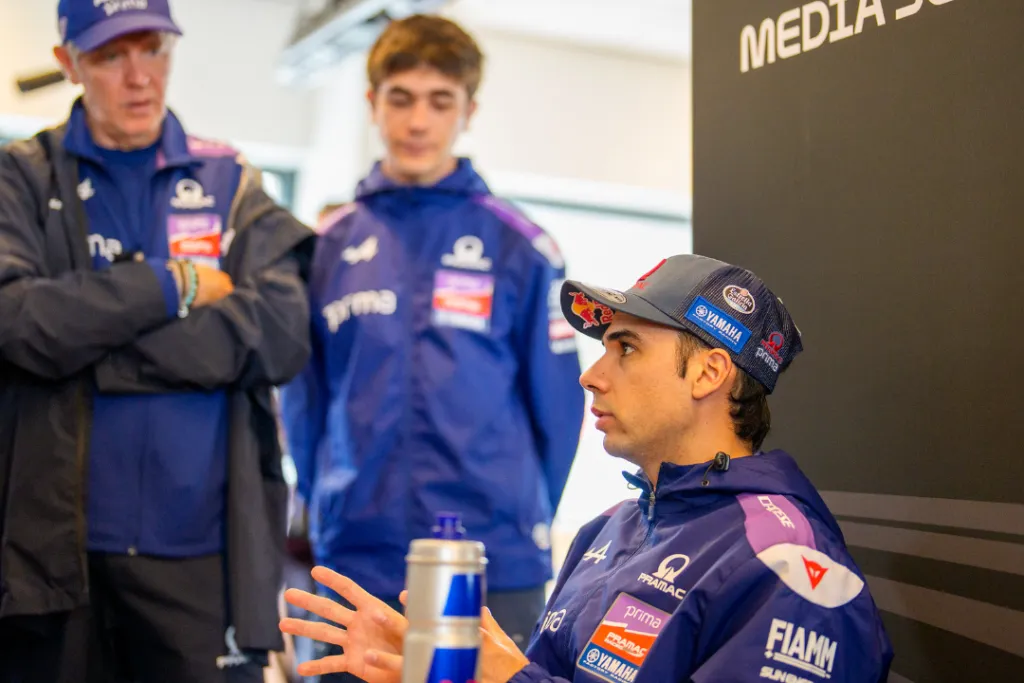
The Stakes for MotoGP
Oliveira’s situation is more than a personal crossroads—it’s a microcosm of MotoGP’s current turbulence. As manufacturers juggle technical overhauls, financial pressures, and a crowded talent pipeline, experienced riders are increasingly squeezed out. But as recent history has shown, championship-caliber teams often rely on precisely the kind of insight that veterans like Oliveira provide.
Losing such experience prematurely could prove costly, both in performance and in the richness of the sport’s narrative. Fans don’t just follow bikes; they follow riders, their arcs, their resilience, and their personalities. Oliveira’s determination to keep racing offers exactly the kind of storyline MotoGP thrives on: grit, uncertainty, and the possibility of redemption.
Conclusion: A Fight Still Burning
For now, the future remains unwritten. Miguel Oliveira may yet secure a competitive seat, or he may be forced to compromise, entering a role that doesn’t match his ambitions. What’s certain is that he won’t go quietly. In a championship where fortunes shift as quickly as weather on a race weekend, Oliveira’s journey serves as a reminder that behind every contract negotiation and technical update lies a deeply human story—a racer’s refusal to let go of the dream.
As the 2026 season approaches, fans and teams alike will watch closely. Because in MotoGP, where every second counts and every decision can ripple across entire seasons, the next chapter of Oliveira’s career could prove to be one of its most dramatic yet.








